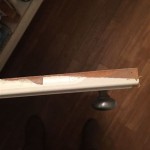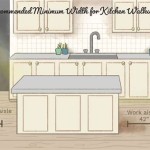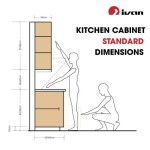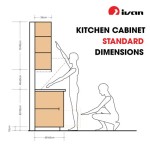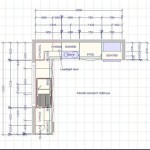What Is The Cost To Paint Kitchen Cabinets?
Painting kitchen cabinets is a popular and cost-effective way to revitalize a kitchen without undertaking a full-scale renovation. A fresh coat of paint can dramatically alter the aesthetic, transforming dated, worn cabinets into a modern and appealing focal point. However, accurately budgeting for a cabinet painting project requires careful consideration of various factors that influence the overall cost. These factors range from the size and material of the cabinets to the level of preparation required and whether the work is done DIY or professionally.
The cost to paint kitchen cabinets is not a fixed figure; it’s a variable influenced by a complex interplay of elements. Understanding these elements will allow homeowners to make informed decisions, obtain accurate quotes, and ultimately achieve a satisfactory outcome within a reasonable budget. This article will delve into the key aspects affecting the cost of painting kitchen cabinets, providing a comprehensive overview to guide homeowners through the process.
Cabinet Size and Configuration
The sheer volume of cabinets to be painted is a primary determinant of cost. Larger kitchens with more cabinets naturally translate to higher material and labor expenses. The configuration of the cabinets also plays a role. Cabinets with intricate details, such as raised panels or decorative carvings, require more time and effort to prepare and paint, increasing the overall cost. Similarly, cabinets that extend to the ceiling or are part of a complex island design might present accessibility challenges, further impacting labor costs.
To accurately assess the cost based on size, measure the total surface area of the cabinets to be painted. This includes the front, sides, and any exposed interior surfaces. This measurement will help estimate the amount of paint and primer required. When obtaining quotes from professional painters, ensure they conduct a thorough assessment of the cabinet size and configuration to provide an accurate estimate.
The type of cabinet hardware also warrants consideration. Removing and reinstalling hardware, such as knobs, pulls, and hinges, adds to the labor time. Homeowners can choose to replace the hardware as part of the painting project, which will add material costs but can further enhance the updated look of the kitchen. Alternatively, choosing to paint around the existing hardware will reduce labor costs but may not yield the most professional finish.
Cabinet Material and Condition
The material of the cabinets significantly impacts the preparation process and the type of paint required, thereby influencing the overall cost. Cabinets constructed from solid wood, such as oak or maple, generally require more extensive preparation than cabinets made from laminate or MDF (medium-density fiberboard). Solid wood cabinets may need sanding to remove existing finishes and create a smooth surface for the new paint to adhere to properly. They may also require priming with a stain-blocking primer to prevent tannin bleed-through, particularly with lighter paint colors.
Laminate cabinets, on the other hand, often require a specialized bonding primer to ensure proper adhesion of the paint. MDF cabinets are porous and may require multiple coats of primer to achieve a smooth, even surface. The condition of the cabinets also plays a crucial role. Cabinets with existing damage, such as chips, dents, or water damage, will require repairs before painting, adding to the labor and material costs. Extensive repairs may involve filling holes, replacing damaged panels, or even reinforcing weak areas.
The existing finish on the cabinets also needs to be taken into account. Cabinets with a glossy or varnished finish will require thorough sanding or deglossing to create a suitable surface for the new paint. Previous layers of paint may also need to be removed if they are peeling or flaking. The presence of lead-based paint, particularly in older homes, presents a safety hazard and requires specialized handling and disposal procedures, significantly increasing the cost of the project.
DIY vs. Professional Painting
One of the most significant factors affecting the cost of painting kitchen cabinets is whether the project is undertaken as a DIY endeavor or contracted to professional painters. Opting for a DIY approach can substantially reduce labor costs, but it requires a significant investment of time, effort, and skill. Homeowners considering this option should carefully assess their capabilities and be prepared to dedicate several days or even weeks to the project.
DIY painting involves purchasing all the necessary materials, including paint, primer, brushes, rollers, sandpaper, drop cloths, and safety equipment. The cost of these materials can range from several hundred to over a thousand dollars, depending on the quality of the products chosen and the size of the kitchen. It is important to invest in high-quality materials to ensure a durable and professional-looking finish. Furthermore, DIY projects may require the purchase of specialized tools, such as a paint sprayer, which can add to the initial expense.
Professional cabinet painting, on the other hand, offers the advantage of expertise, efficiency, and a guaranteed result. Professional painters have the knowledge and experience to properly prepare the cabinets, apply the paint evenly, and troubleshoot any issues that may arise. They also have access to professional-grade equipment and materials, which can contribute to a superior finish. However, hiring professional painters comes at a cost. Labor costs typically account for a significant portion of the overall project expense. The exact cost will vary depending on the painter's experience, the complexity of the project, and the location.
When obtaining quotes from professional painters, it is essential to compare multiple bids and carefully review the scope of work included in each quote. Ensure that the quote includes all aspects of the project, such as preparation, priming, painting, and cleanup. Ask for references and review online testimonials to assess the painter's reputation and quality of work. A detailed contract outlining the project timeline, payment schedule, and warranty is crucial to protect the homeowner's interests.
Professional painting often includes services like removing cabinet doors and drawers, thorough cleaning and degreasing, sanding and priming, applying multiple coats of paint, and re-installing hardware. Some painters offer additional services, such as replacing hardware or installing soft-close hinges, which can further enhance the value of the project. Carefully weigh the pros and cons of DIY versus professional painting to determine the best option based on budget, skill level, and desired outcome.
The choice between DIY and professional painting also depends on the homeowner’s tolerance for potential errors. A poorly executed DIY paint job can result in uneven coverage, drips, brush strokes, and other imperfections that detract from the overall appearance of the kitchen. Correcting these errors can be time-consuming and costly, potentially negating the initial cost savings of a DIY approach. Professional painters, on the other hand, typically offer a warranty on their work, providing assurance that any issues will be addressed promptly and effectively.
Ultimately, the decision to DIY or hire a professional painter should be based on a realistic assessment of the homeowner's skills, time commitment, and budget. While DIY painting can be a cost-effective option for experienced and dedicated homeowners, professional painting offers a higher level of quality, efficiency, and peace of mind.
Beyond the general labor and material costs, other specific considerations can impact the overall project budget. These include the choice of paint type, the complexity of the paint color, and any required modifications to the cabinets.
The type of paint used significantly affects both the cost and the durability of the finished product. Oil-based paints are known for their durability and smooth finish, but they require longer drying times and are more difficult to clean up. They also emit higher levels of volatile organic compounds (VOCs), which can be harmful to health. Water-based paints, such as acrylic latex paints, are more environmentally friendly, easier to clean up, and dry faster. They are also available in a wide range of colors and finishes. However, they may not be as durable as oil-based paints and may require more coats to achieve adequate coverage. The cost of paint varies depending on the type, brand, and quality. High-quality paints generally provide better coverage, durability, and color retention, but they also come at a higher price.
The complexity of the paint color can also influence the cost. Custom colors that require mixing or matching may be more expensive than standard colors. Darker colors often require more coats of paint to achieve full coverage, increasing the material costs. Color samples should be tested on a small, inconspicuous area of the cabinets to ensure the desired result before committing to the entire project.
Any required modifications to the cabinets, such as adding new hardware, installing soft-close hinges, or refacing cabinet doors, will add to the overall cost. These modifications can significantly enhance the functionality and appearance of the kitchen, but they should be carefully considered in relation to the budget.

Kitchen Cabinet Painting Cost 2024

How Much Does It Cost To Paint Cabinets Maller Painting

How Much Does It Cost To Paint Kitchen Cabinets Paintzen

What Is The Cost To Paint My Kitchen Cabinets Ramsden Painting

How Much To Paint Kitchen Cabinets Professionally Diy Vs Hire A Pro

How Much Does It Cost To Paint Kitchen Cabinets Professionally In Novi Mi

How Much Does It Cost To Paint Kitchen Cabinets

Costs To Paint Kitchen Cabinets Diy Vs Hiring Professional Painters

How Much Does It Cost To Paint Kitchen Cabinets

How Much Does It Cost To Paint Kitchen Cabinets Walls By Design
Related Posts

